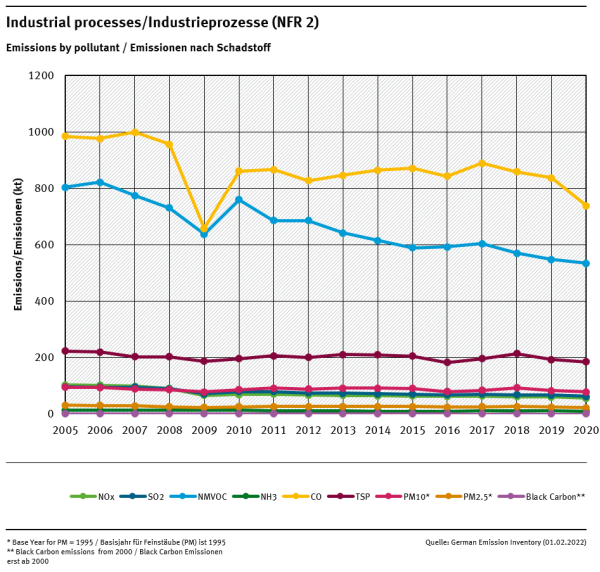meta data for this page
Chapter 4 - NFR 2 - Industrial Processes and Product Use
Industrial processes are an important emission source for most pollutants. Due to Germany's high-level, differentiated industry featuring numerous companies and a large number of plants for each sector, emission estimation for industrial processes is very complex. Please refer to the sub-sections below for details.
In the area of industrial processes, production data from association statistics and of manufacturers' information is used. In the interest of the inventory's completeness and reliability, checking of source-category definitions and data-collection methods will stay a priority where emissions reporting is based on such sources. The inventory is considered complete for the main industrial processes. [!– (Should be described at the source category level) Nevertheless, there are still certain categories awaiting further examination, though only negligible contributions to the national total emissions are expected. –]
NFR 2 consists of the following and sub-categories:
Visual overview
Chart showing emission trends for main pollutants in NFR 2 - Industrial Processes:


Contribution of NFR categories to the emissions/Anteile der NFR-Kategorien an den Emissionen


